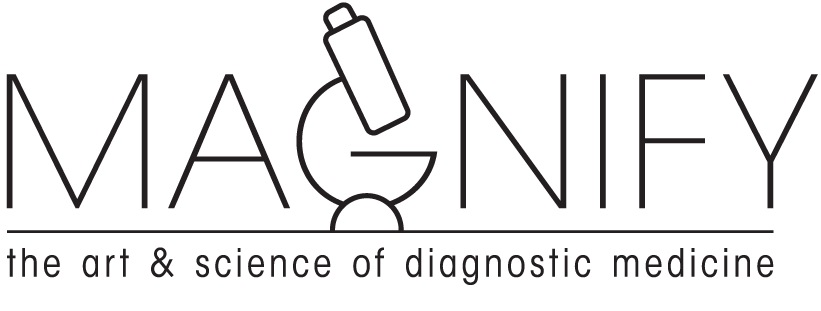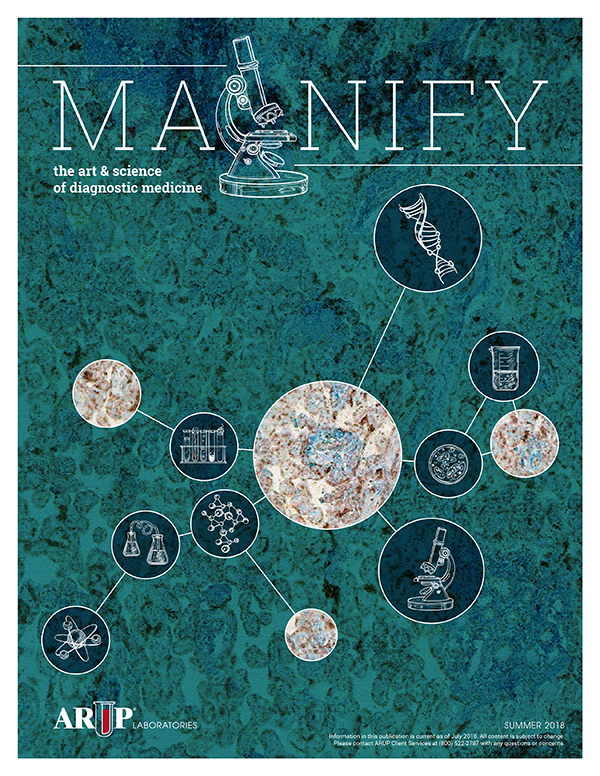Creating Ecosystems That Amplify Impact: ARUP’s Innovation Business Unit Is Fast-Tracking Diagnostic Solutions Through Partnerships
In September 2023, ARUP Laboratories founded its Institute for Research and Innovation in Diagnostic and Precision Medicine™ (R&I Institute) as part of the creation of a newly formed, wider division, the Innovation Business Unit (IBU), that will lead focused efforts in diagnostic technology innovation.

In September 2023, ARUP Laboratories founded its Institute for Research and Innovation in Diagnostic and Precision Medicine™ (R&I Institute) as part of the creation of a newly formed, wider division, the Innovation Business Unit (IBU), that will lead focused efforts in diagnostic technology innovation.
Tracy George, MD, ARUP chief scientific officer and president of the IBU, spearheaded the formation of the new entity.
“We’ve created a division that is dynamic, nimble, and fast-paced to accelerate innovative developments in laboratory medicine, ultimately to benefit patients and improve patient care,” George said. “We’re focused on collaborating with like-minded partners who share our sense of purpose.”
Within the IBU, the R&I Institute investigates emerging technology that has significant potential to alter the future of diagnostic medicine, even though it may be years away from use in clinical settings.
Robert Ohgami, MD, PhD, FCAP, vice president of the R&I Institute, explained that the institute is “creating ecosystems that foster innovation, break down barriers, and magnify patient impact.”
Since its formation, the R&I Institute has established key partnerships with industry leaders, including an ongoing partnership with Tasso, a provider of blood collection solutions. Their novel blood collection device enables remote blood collection to support clinical trial recruitment. As part of this collaboration, ARUP has validated several assays for samples obtained by the device, which collects a smaller volume of blood than traditional blood draws. ARUP’s teams will continue to validate more specimens for additional assays.
The IBU also includes ARUP’s PharmaDx and Clinical Trials groups, which are led by Jay Patel, MD, MBA, vice president.
Through the efforts of Patel’s team, ARUP Laboratories’ companion diagnostic test, AAV5 DetectCDx™, received FDA approval, becoming the first companion diagnostic immunoassay approved for a gene therapy on June 29, 2023.
The milestone represents the culmination of nearly a decade of dedicated effort by the members of the PharmaDx group, whose perseverance and expertise have proven essential to develop a high-quality assay that meets the rigorous regulatory requirements of both the FDA and the European Commission and is scalable for clinical use globally.
“PharmaDx exists to meet the unique need that biotech and pharma companies have for companion diagnostic devices, especially in rare diseases,” Patel said. “Due to our strong values and dedication to patient needs, ARUP is well positioned to address the need for companion diagnostics.”
The ARUP Institute for Clinical and Experimental Pathology® (R&D) forms the final piece of the strategic approach. Led by Kristi Smock, MD, R&D concentrates on the development of new tests that have established clinical utility. R&D also supports ARUP’s 70-plus laboratories to ensure continued efficiency and quality.
“ARUP is known as a high-quality laboratory, and R&D plays a significant role in maintaining the quality of the tests on our test menu. We have a whole team that maintains, updates, improves, and develops new tests,” Smock said.
For example, as a result of R&D’s efforts, ARUP has recently launched its Rapid Acute Myeloid Leukemia Targeted Therapy Mutation Panel. The panel provides a tool to rapidly assess mutations and identify prognostic markers so that effective targeted therapies can be started promptly.
R&D celebrated 25 years in operation in 2021.
The IBU combines the right experts with ARUP’s exceptional operational proficiency to push the boundaries of diagnostic medicine.
“We have created a dynamic team of experts who bring deep expertise to accelerate innovations that have significant potential to meaningfully impact patient care,” George said.
Meet the Forward-Thinking Leaders of the ARUP Innovation Business Unit
Tracy George, MD
Visionary Who Leads Transformative Breakthroughs
Tracy George, MD, joined ARUP Laboratories in 2018 as the director of PharmaDx and Clinical Trials. Under her leadership, PharmaDx and Clinical Trials experienced substantial growth. Later, she served as chief medical officer, leading ARUP’s labs through COVID-19. Now, George has spearheaded a more concentrated effort to drive innovation. She has played a key role in the formation of ARUP’s Innovation Business Unit (IBU), and now serves as president of the IBU and as ARUP’s chief scientific officer.
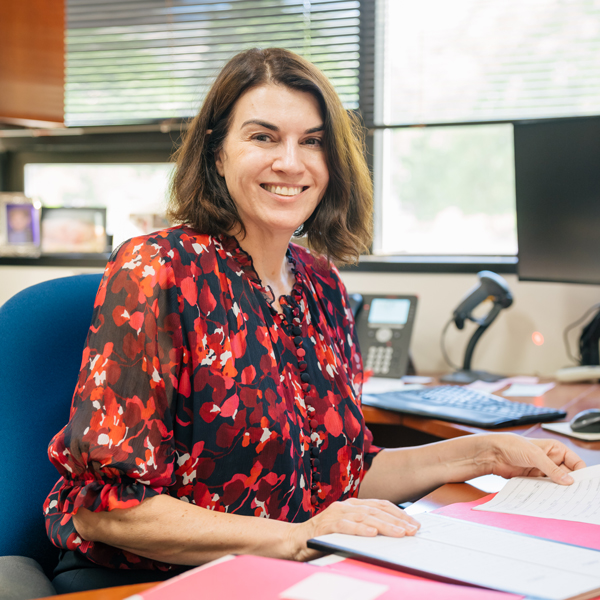
Which experiences in your life led you to become a pathologist? An innovator?
I met a pathologist, Susan Atwater, MD, while working as part of a summer honors program at the Lawrence Livermore National Laboratory at the University of California, Berkeley (UC Berkeley). Dr. Atwater invited me to do a rotation with her in medical school at the University of California, San Francisco (UCSF) that further led me to explore pathology and laboratory medicine as a potential career. Years later, I worked with Dr. Atwater as a colleague at Stanford University in the Department of Pathology.
I have participated in biomedical research since I was in college and particularly enjoyed working on translational research that bridges basic scientific research with clinical medical practice. I worked on a project that used fluorescence in situ hybridization (FISH), a novel technique at the time, to detect chromosomal abnormalities in bladder cancer. I remember speaking to one of my professors at UC Berkeley about the potential of FISH. He did not think that the technology was useful, but I disagreed. Now, FISH is routinely used in many areas of medicine, including the detection of chromosomal abnormalities in various neoplasms.
I also consulted for various startups during my time as a faculty member at Stanford, which further cemented my interest in innovation.
Which accomplishments are you most proud of at this point in your career?
I have held many roles that have allowed me to influence the development of new therapies and technologies to further improve patient care, through my own research and through various leadership opportunities. I’ve continued to engage in translational research, including a seven-year, international, multi-institutional clinical trial that culminated in the development of a new therapy for systemic mastocytosis (SM), [the results of which were] published in the New England Journal of Medicine. I’ve participated in many other clinical trials for new therapies for SM. At ARUP, I was appointed chief medical officer during COVID-19 and led ARUP’s medical directors as we navigated the challenges the pandemic posed. Now, I serve as chief scientific officer and president of the newly formed IBU.
Why have you chosen to focus on innovation?
Innovation is fun! I find it deeply satisfying to brainstorm problems with our exceptional team members and to find solutions through new technologies and tools. Innovation is fundamental to develop advancements in medicine.
Which aspects of your expertise and experience do you believe will contribute most to the success of the Innovation Business Unit?
Working at different institutions with different people has allowed me to have a great deal of experience in medicine that spans a wide range of laboratory settings. I have led individual clinical laboratories at academic hospitals, including Stanford and Lucile Packard Children’s Hospital (LCPH); the Genetics and Cytometry Laboratories at TriCore, a regional reference laboratory; and I have served as the chief medical officer at ARUP, a national reference laboratory. In addition, I’ve gained business experience while sitting on the board of directors of a family-run business for many years and through consulting with startups while working in the Bay Area. I’ve developed an approach to leadership that will contribute most to the success of our IBU: First, choose the right people. Second, create a leadership structure that makes sense with your leaders. Third, give leaders responsibility, authority, and resources to do their job. Fourth, allow your leaders to lead (don’t micromanage). Fifth, share the success and learn from opportunities for improvement.
Which opportunities for innovation in laboratory medicine are you most excited about, and why?
I am most excited about applied artificial intelligence (AI) and its potential to solve targeted problems in pathology and laboratory medicine. AI will provide new tools to solve existing problems, and, in terms of opportunities for improvement, the sky is the limit!
From your perspective, which obstacles do innovators in laboratory medicine face? How is ARUP positioned to help address those challenges? How will you use your expertise and experience to help address those challenges?
There are many challenges in laboratory medicine for innovators, including technical, regulatory, funding, and staffing challenges, and challenges of access to subject matter expertise. ARUP has significant experience in all of these areas, with outstanding staff members who can aid our partners in overcoming those challenges. Collaborations between industry and academia serve as a great way to expand expertise, combine resources, and thrive together.
Why should industry partners choose to collaborate with ARUP?
We have amazing physicians and scientists here at ARUP, and we all agree that our mission is to improve patient care. Our track record demonstrates ARUP’s capability to innovate and collaborate with industry partners. We are the number one laboratory of choice for those who are looking for the highest quality and most innovative reference lab.
Robert Ohgami, MD, PhD, FCAP
Fearless Innovator To Magnify Patient Impact
Robert Ohgami, MD, PhD, FCAP, serves as the vice president for the ARUP Institute for Research and Innovation in Diagnostic and Precision Medicine™ (R&I Institute). Ohgami has spent his career dedicated to translational research, including important breakthroughs in the development of next generation sequencing, such as targeted sequencing for myeloid neoplasms and diagnosis of lymphomas and leukemias.
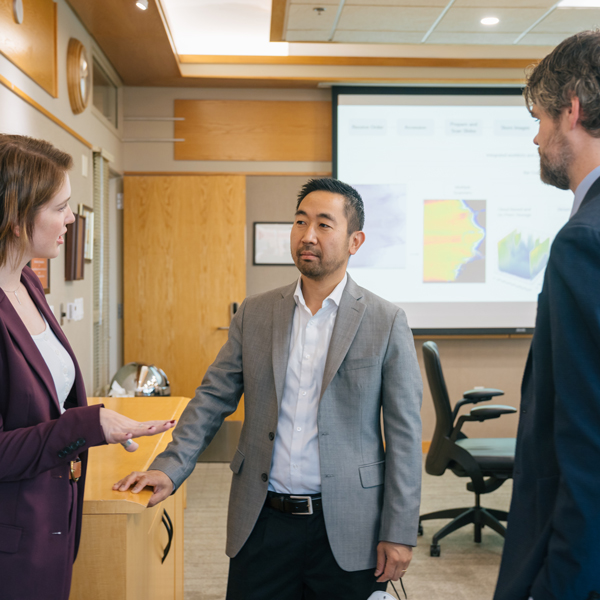
Which experiences in your life led you to become a pathologist? An innovator?
In 2000, I began medical and graduate school training, intending to become a pediatrician. However, my interactions with pathologists, who were also my teachers and mentors, led me to rethink this path and ultimately choose pathology. I was captivated by its unique integration of science, clinical practice, research, and innovation. During graduate school, I worked with Mark Fleming, MD, DPhil, in his lab at Boston Children’s Hospital. Dr. Fleming, an expert in hematopathology and iron metabolism research, seamlessly integrated clinical responsibilities, education, and research. Observing him make complex diagnoses and teach fellows, then rush back to the lab, solidified my decision to pursue hematopathology. He exemplified a fearless, curious mindset, embracing innovation. His advice, “Ignore what people say you ought to do; follow your own path,” has been a guiding principle in my career.
Which accomplishments are you most proud of at this point in your career?
At this point in my career, I am most proud of the development and success of my students and mentees, our significant contributions to diagnostic pathology through translational research, and the synergy between these two areas. Leading the R&I Institute resonates deeply with me, as it embodies both groundbreaking translational research and an environment that emphasizes teaching and mentoring. The institute thrives on mutual learning and collaboration, extending from our internal team to our industry and academic partners, fostering the development of innovative diagnostics, and sharing knowledge through international presentations and publications.
In addition, my scientific and clinical contributions have elucidated the cellular origins of Castleman disease, genetic and environmental factors in blastic plasmacytoid dendritic cell neoplasm (BPDCN), mutational subtypes in pediatric lymphomas, and the immunophenotypic characteristics of indolent T-lymphoblastic proliferations.
Why have you chosen to focus on innovation?
My dedication to innovation stems from my dual role as a translational researcher and a practicing pathologist. Innovating has been a central theme throughout my career. I find my greatest sense of flow—a state of deep engagement and fulfillment—in creating and developing new technologies, and novel diagnostic approaches and insights, that are adopted and used by others. This process of discovery and creation is not just professionally rewarding but also deeply meaningful to me. Furthermore, ARUP Laboratories’ commitment to magnifying patient impact resonates with my own values to prioritize innovative solutions to enhance patient care, which makes it the perfect environment.
Which aspects of your expertise and experience do you believe will contribute most to the success of the Innovation Business Unit?
The foundation of my contribution to the Innovation Business Unit (IBU) lies in my extensive experience in scientific research, diagnostic pathology, and leadership. My academic and practical journey, from graduate studies to leading translational research labs as a clinician scientist, has equipped me with valuable insights and skills. This experience, combined with my ongoing work in diagnostic pathology, ensures a relentless commitment to patient-centric innovation. Leadership roles at Stanford, University of California, San Francisco (UCSF), and ARUP have refined my ability to navigate complex organizational structures, teaching me the importance of knowing when to lead, how to lead with other leaders, and when to collaboratively follow.
Which opportunities for innovation in laboratory medicine are you most excited about, and why?
There are three opportunities for innovation in laboratory medicine that excite me: applied artificial intelligence (AI), big data, and genomic medicine. I am particularly excited about the potential of applied AI in laboratory medicine. This technology can revolutionize diagnostics by enhancing accuracy, efficiency, and consistency. At ARUP, we are already using simple forms of AI to rapidly diagnose myeloid malignancies and patients with inherited disorders via genomic sequencing. AI algorithms can analyze complex datasets faster and more accurately than traditional approaches, leading to fast and reliable diagnoses. The integration of big data in laboratory medicine presents a significant opportunity for innovation. With the vast amounts of data generated in laboratory medicine, big data analytics can uncover patterns and trends that were previously unnoticed. This can lead to breakthroughs in understanding diseases, developing new diagnostic tests, and improving patient care. My excitement about genomic medicine stems from its capacity to transform patient care through advanced diagnostic techniques, ultimately enabling personalized treatment plans.
From your perspective, which obstacles do innovators in laboratory medicine face? How is ARUP positioned to help address those challenges? How will you use your expertise and experience to help address those challenges?
Innovators in laboratory medicine face significant obstacles, including resource scarcity and the pressure of time constraints. These challenges necessitate the development of cost-effective and time-efficient solutions to enhance patient care and laboratory operations. ARUP is uniquely positioned to address these challenges through its strategic investment in research and innovation, coupled with its strong partnerships. This approach not only mitigates resource limitations but also accelerates the development and implementation of innovative solutions. Leveraging my expertise in collaborative research and resource optimization, I will contribute to transforming these challenges into opportunities for advancement. My experience in strategic planning and implementation equips me to lead initiatives that efficiently manage time constraints to ensure rapid innovation and the adoption of new technologies. Furthermore, I am committed to advancing ARUP’s capabilities in applied AI, big data analytics, and molecular medicine, areas where my research background aligns with the company's vision for leading innovation in laboratory medicine.
Why should industry partners choose to collaborate with ARUP?
Industry partners should choose to collaborate with ARUP due to our strong reputation for quality service, which forms the foundation of all our partnerships. However, true synergistic collaboration extends beyond just delivering quality service; it requires alignment on four critical levels: mission, sense of urgency, long-term strategic vision, and culture. Partners align with us on our mission to significantly impact patient outcomes through innovation. Our white-glove service, combined with a sense of urgency, ensures efficiency and timely deliverables. Our long-term strategic vision attracts partners looking for sustainable success, whereas our compatible cultures enable seamless collaboration.
Paul Osmundson
Building Synergy To Foster Successful Collaborations
Paul Osmundson is the vice president of Business Development in the Innovation Business Unit (IBU). Osmundson joined ARUP in 2023. He has extensive leadership experience in diagnostic sales, business development, marketing, payer relations, and strategy.
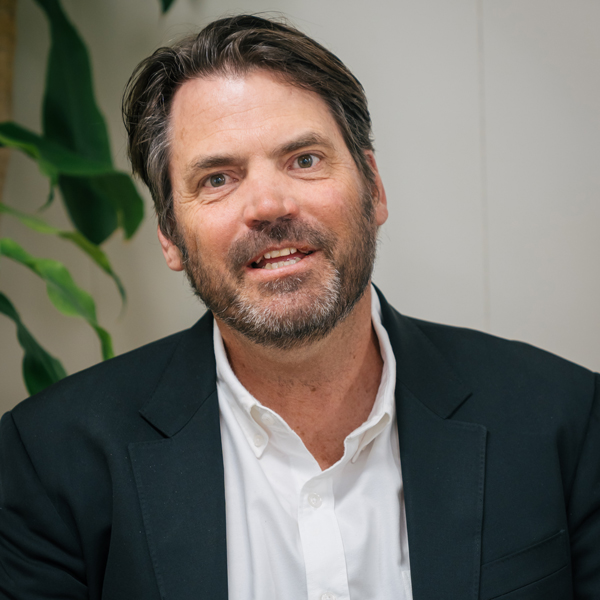
Which experiences in your life led you to become involved in business development in the innovation space?
As with most of us, I’ve felt the impact of family challenges and loss due to undiagnosed or misdiagnosed conditions, or poor outcomes that result from avoiding healthcare. Those experiences have given me purpose and drive to be involved in the development of new technologies, deliverables, and payment models that can positively impact the human condition.
My career started in anatomic pathology and that led to molecular pathology and eventually clinical pathology. As I’ve witnessed advancement in medicine improve the treatment of medical conditions, it’s inspired me to be part of the efforts that drive clinical findings, lead to early diagnosis, and provide better therapies to improve patient lives.
Which accomplishments are you most proud of at this point in your career?
The most rewarding aspect of my work is hearing how projects, partnerships, and technology have directly impacted the quality of life, and even sustained life, for patients throughout their healthcare journey.
At one point in my career, I overheard a physician speaking with a patient going through the diagnosis process. The physician mentioned that the lab he was using was best in class and it would provide the necessary information to make the best decisions specifically for that patient.
As I listened to this example of how diagnostic solutions can empower physicians with the right tools to make decisions and provide care, I was honored to play a role in the development of those solutions.
Why have you chosen to focus on innovation?
I have found that leading technologic advancements is extremely rewarding, especially as we realize solutions that can amplify patient impact when they are scaled and commercialized.
Which aspects of your expertise and experience do you believe will contribute most to the success of the Innovation Business Unit?
I excel at identifying individual synergies to move through seamless negotiations, as well as to find the right cultural and strategic fit to generate successful collaborations.
Which opportunities for innovation in laboratory medicine are you most excited about, and why?
First, advancements in neurology, and especially Alzheimer’s disease, where we have a huge opportunity to impact patient lives with early detection and treatment. Second, the potential of genetics testing to identify predispositions for disease that may lead to predictive interventions. Third, digital solutions such as digital pathology, applied artificial intelligence (AI), and machine learning (ML) that will drive the future of medicine. The IBU is exploring many other technologies, strategies, and collaborations to advance medicine.
From your perspective, which obstacles do innovators in laboratory medicine face? How is ARUP positioned to help address those challenges? How will you use your expertise and experience to help address those challenges?
There is so much technology coming from all different sources. The tech industry has entered the healthcare space with exciting solutions, but they will need to navigate the rigid regulatory environment to ensure patient safety.
As academic subject matter experts, our team members can help guide our collaborators and industry partners through consultation, collaboration, and goal alignment.
Why should industry partners choose to collaborate with ARUP?
For those that require the highest standards that will truly impact a patient and those who manage their care, ARUP is clearly the best choice.
Jay Patel, MD, MBA
Building Dynamic Teams To Broadly Impact Diagnostic Medicine
Jay Patel, MD, MBA, is the vice president of PharmaDx and Clinical Trials at ARUP. After completing a hematopathology fellowship at Stanford University, Patel joined ARUP in 2014 as a medical director of Hematopathology. His leadership has led to key expansions in PharmaDx and Clinical Trials, as well as achievements such as obtaining FDA approval for ARUP’s companion diagnostic, AAV5 DetectCDx™.
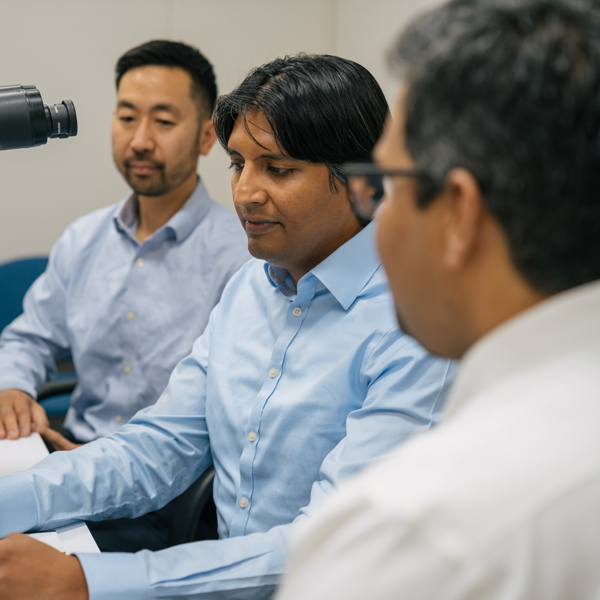
Which experiences in your life led you to become a pathologist? An innovator?
The revolution in molecular biology took place when I was a young student and sparked my interest in the underlying basis of disease. I’ll always remember using a polymerase chain reaction (PCR) technique on our first day of freshman biology lab! This eventually led me to become a pathologist with a clinical focus on molecular diagnostics. I enjoy clinical practice but was drawn to work with ARUP’s PharmaDx and Clinical Trials groups, now part of the Innovation Business Unit (IBU), because of the potential to improve the lives of large numbers of patients through innovation in diagnostics.
Which accomplishments are you most proud of at this point in your career?
I’m most proud of my role in building a strong and dynamic team that continues to learn, grow, and execute on behalf of the patients and clients we serve.
Why have you chosen to focus on innovation?
I love doing this work because we have the potential to broadly impact disease states and entire patient populations through innovation in laboratory medicine. There is an excitement that comes with doing work that is new and inherently difficult, which motivates me.
Which aspects of your expertise and experience do you believe will contribute most to the success of the Innovation Business Unit?
Through leadership of our PharmaDx and Clinical Trials groups, I have gained experience in leading high-stakes collaborations with biopharma companies of all sizes. These are complex, long-term engagements that bring great opportunity along with unique challenges. To position these partnerships for success and drive programs forward, our team brings a depth of expertise to bear across various functional areas, including project management, technical and laboratory operations, quality and regulatory affairs, as well as business development.
Which opportunities for innovation in laboratory medicine are you most excited about, and why?
The promise of precision medicine is slowly but surely being fulfilled, and laboratory medicine plays a key role. Diagnostic tools enable the precision medicine paradigm—the right therapy for the right patient at the right time—to become reality. As scientific advances drive progress in precision medicine, I am confident that laboratory medicine will continue to be a crucial piece of this puzzle.
From your perspective, which obstacles do innovators in laboratory medicine face? How is ARUP positioned to help address those challenges? How will you use your expertise and experience to help address those challenges?
The economic considerations at play in laboratory medicine are real and represent a formidable obstacle to laboratory medicine reaching its full potential. Through collaboration with multiple stakeholder groups, including payers, patient advocacy organizations, therapeutic companies, and in vitro medical device manufacturers, laboratory medicine providers can work to overcome these challenges.
Why should industry partners choose to collaborate with ARUP?
ARUP is an ideal partner for industry because our mission and values align well with the goals of most prospective innovative industry partners. We bring broad medical, operational, regulatory, and tactical experience to the table and can collaborate with partners in ways that other reference laboratories cannot.
Kristi Smock, MD
Driven To Improve Patient Care
Kristi Smock, MD, is the vice president overseeing the ARUP Institute for Clinical and Experimental Pathology® (R&D). She is a medical director of ARUP’s Hemostasis/Thrombosis Laboratory and is active in the hemostasis/thrombosis professional community. Smock is the recipient of the Bill Roberts Award for Clinical Excellence in Laboratory Medicine and the Outstanding Teaching Award in Clinical Pathology at the University of Utah, and she was named a 40 Under Forty honoree by the American Society for Clinical Pathology (ASCP).
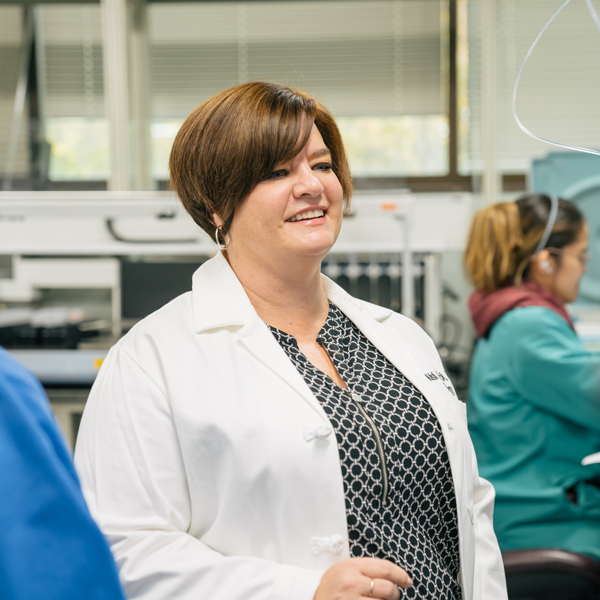
Which experiences in your life led you to become a pathologist? An innovator?
I have always been motivated to understand how things work. In medical school, I came to understand pathology as the specialty that incorporates knowledge about mechanisms of disease with diagnostic applications in patient care. Through innovation, we can continuously advance our knowledge and applications to benefit patients.
Which accomplishments are you most proud of at this point in your career?
Through my role as an ARUP medical director in the Hemostasis/Thrombosis Laboratory and my involvement in the leadership of several national and international professional organizations, I’m proud to have provided excellent patient care for patients with bleeding and thrombotic disorders.
Why have you chosen to focus on innovation?
My primary goal is always to continuously improve patient care and outcomes, and innovation makes that possible.
Which aspects of your expertise and experience do you believe will contribute most to the success of the Innovation Business Unit?
I have worked at ARUP since starting my pathology residency in 2003. I have extensive experience as an ARUP medical director and University of Utah academic faculty member and have strong working relationships with individuals across the company and university. This institutional knowledge helps me facilitate the collaborations necessary to help R&D bring on impactful new tests and support ARUP’s existing test menu.
Which opportunities for innovation in laboratory medicine are you most excited about, and why?
I’m most excited about the opportunity to develop laboratory testing that drives medicine to become more personalized for individual patients and addresses how disease manifestations and response to treatment vary from patient to patient. I see opportunities for this across diverse areas of laboratory medicine.
From your perspective, which obstacles do innovators in laboratory medicine face? How is ARUP positioned to help address those challenges? How will you use your expertise and experience to help address those challenges?
The ultimate goal for innovators in laboratory medicine is to implement new technologies and applications in clinical laboratories for the benefit of patients. To accomplish that, innovators need to consider how and when to incorporate new tests into the clinical practice landscape. For example, there needs to be clinical acceptance and consensus about how to interpret and act on the results. Reimbursement can also prove challenging in the early phase of a new test, when clinical uses are still emerging. The expertise present at ARUP, along with our excellent reputation in the field, enables us to navigate these challenges and to provide impetus in the medical community by disseminating our technical and clinical knowledge.
Why should industry partners choose to collaborate with ARUP?
Collaborating with ARUP has many benefits for our partners. We offer deep scientific and medical knowledge across laboratory medicine, and we know how to move the right technologies and tests from investigational stages to operationalized tests that meet rigorous quality and regulatory standards.

